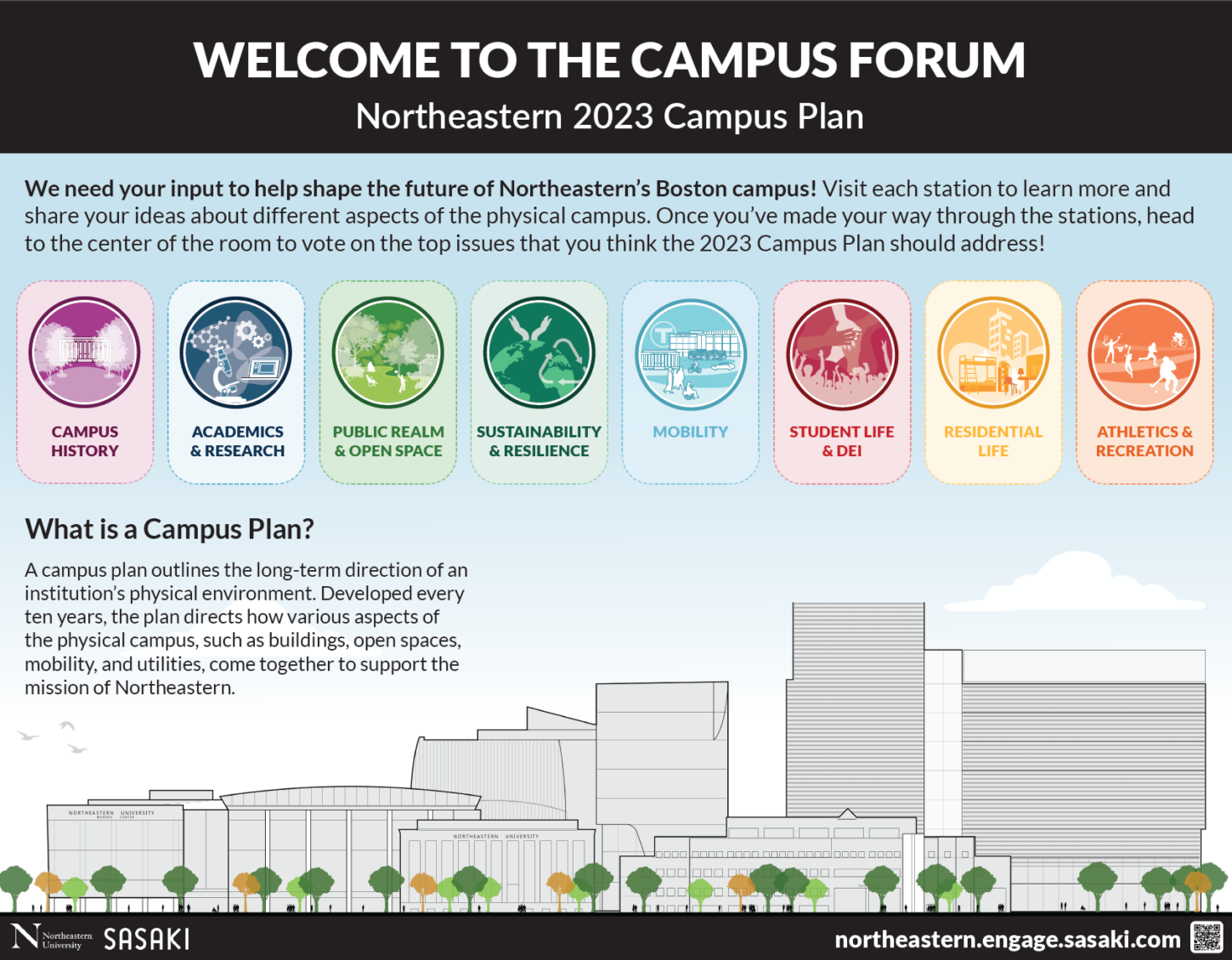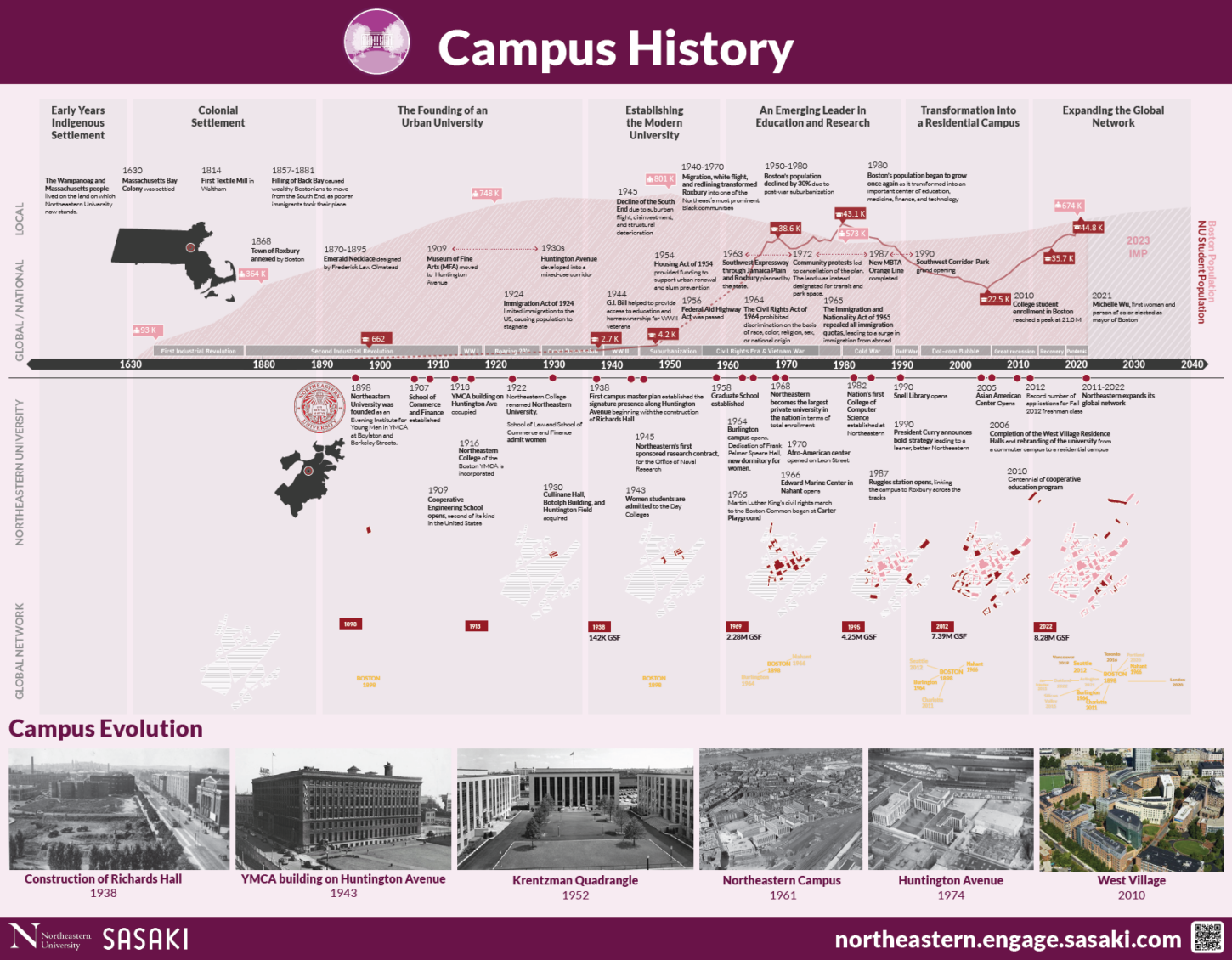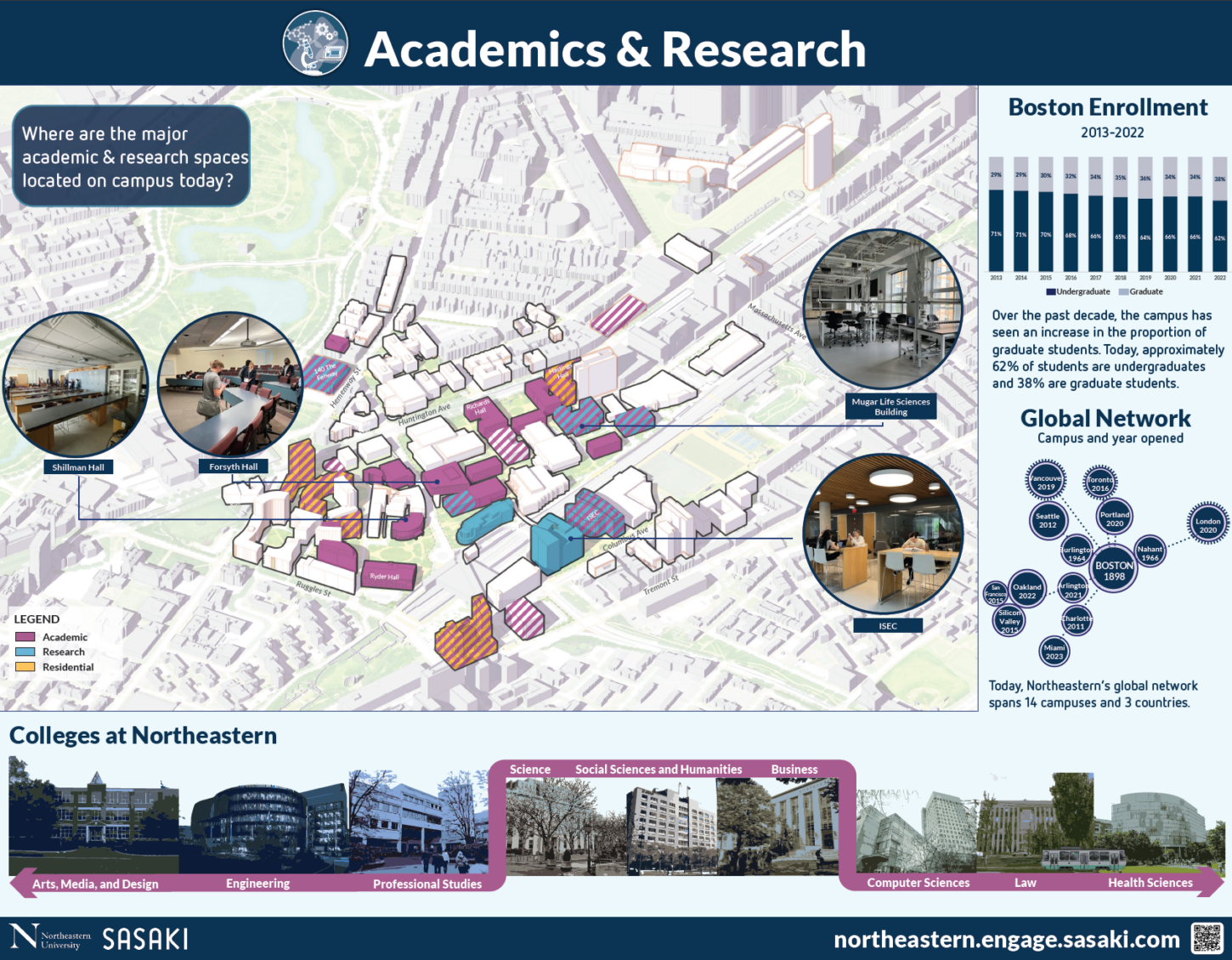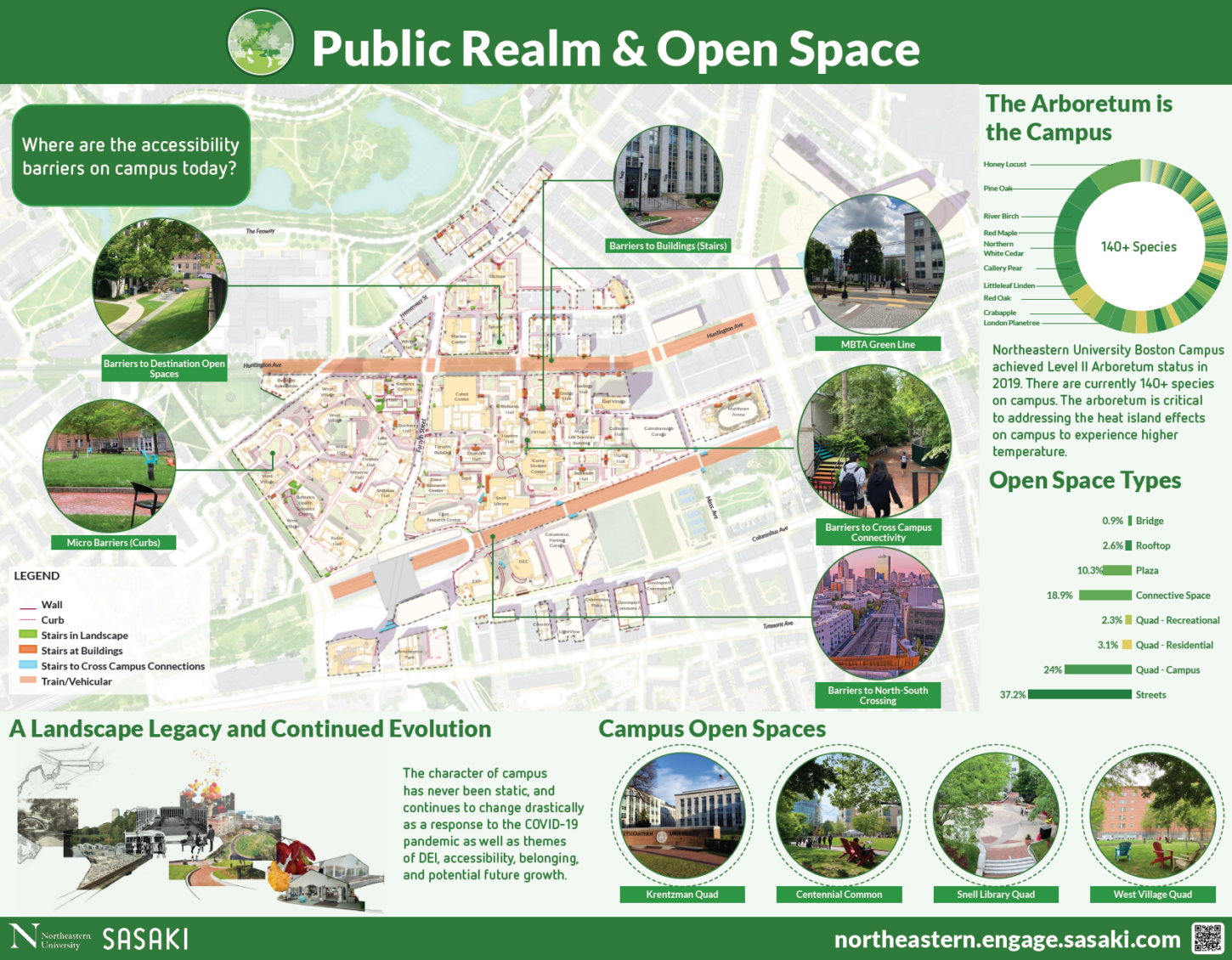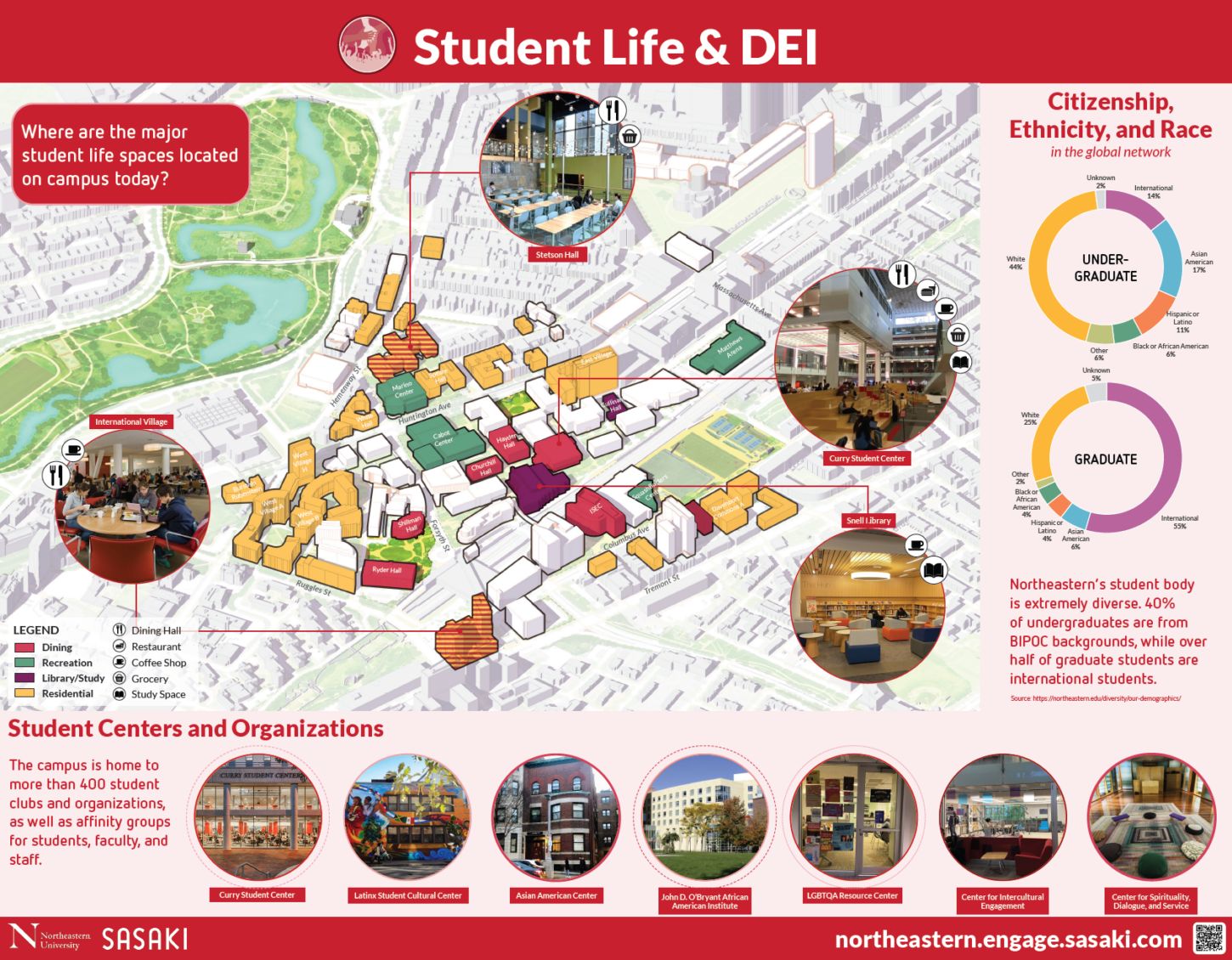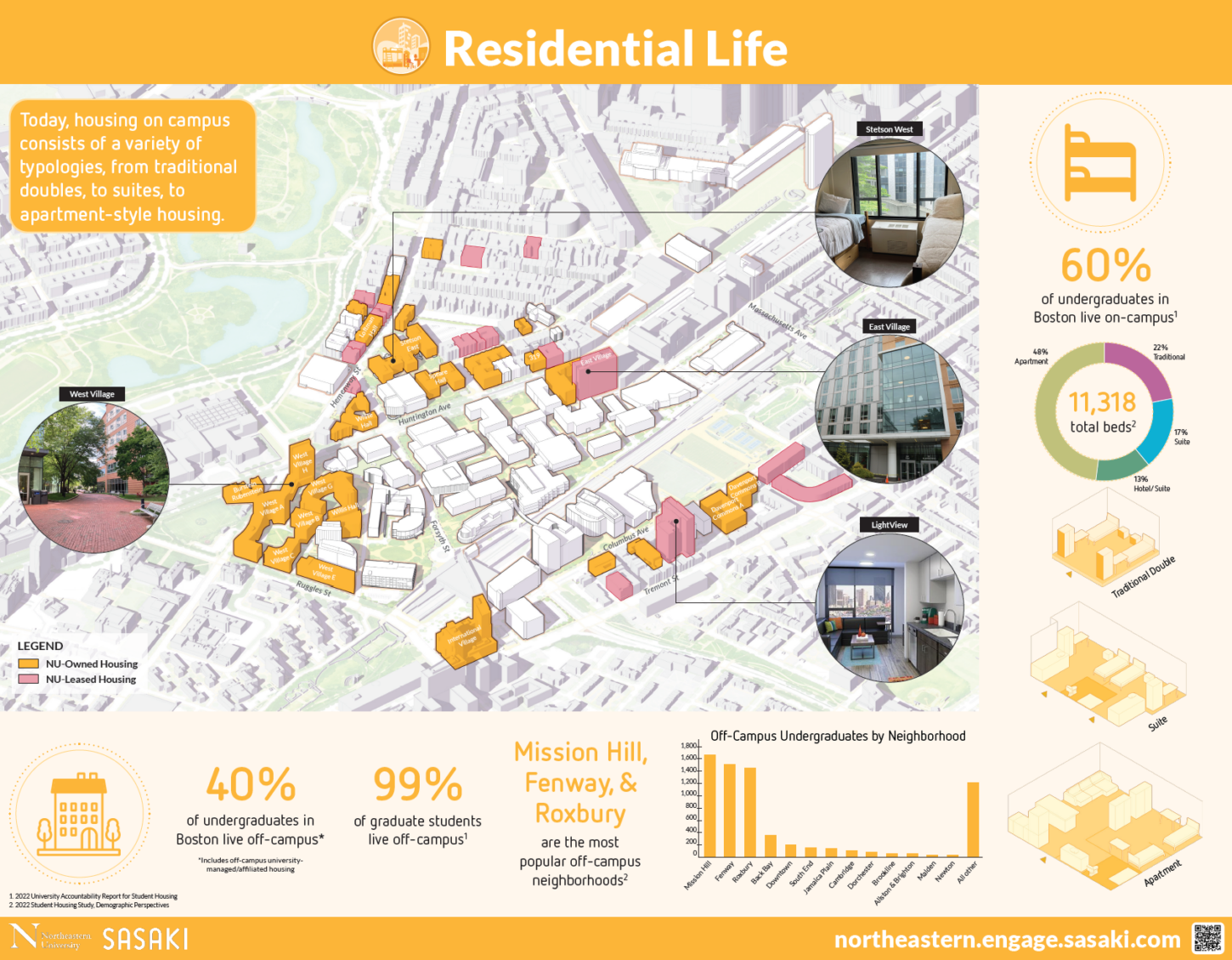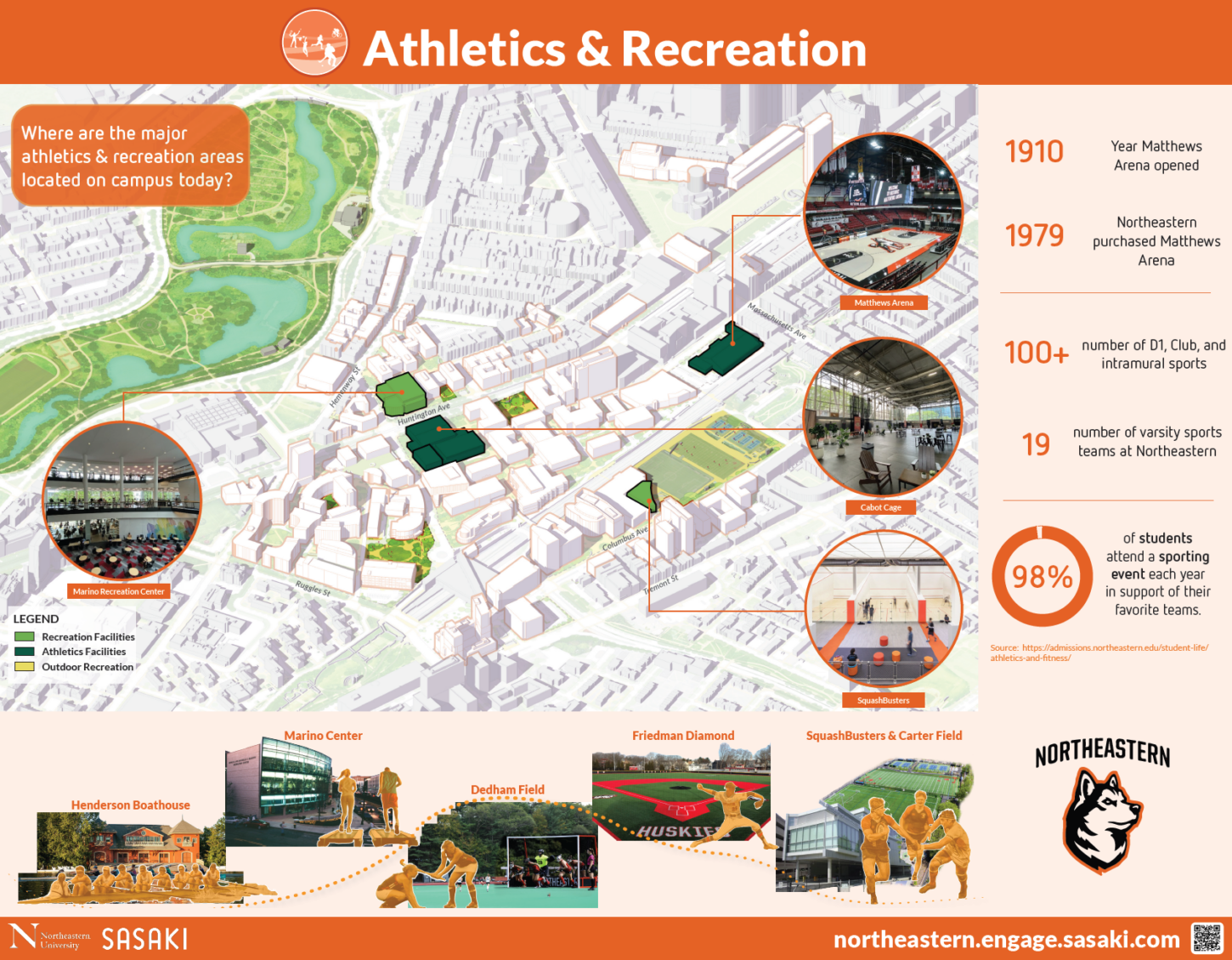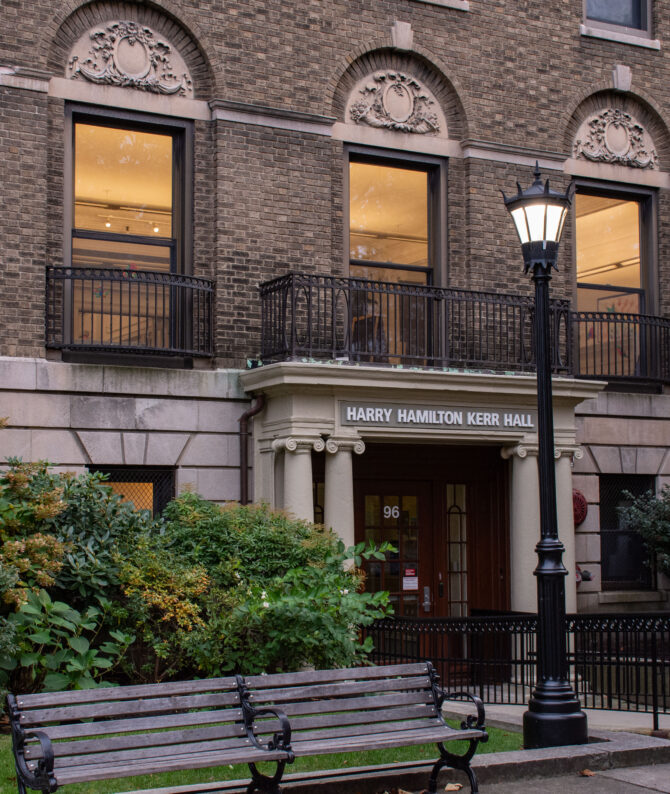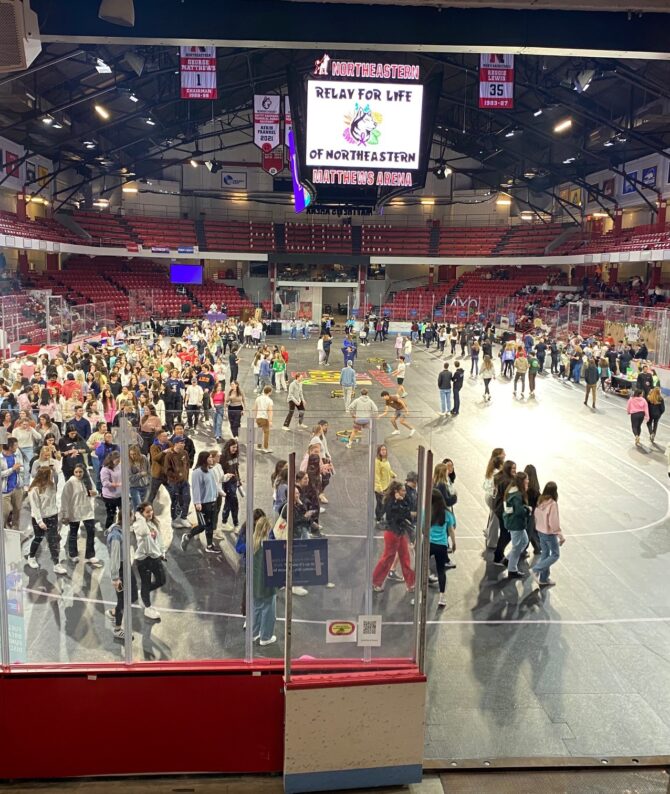Northeastern Campus Planning & Design Team and Sasaki Present Student Survey Data for Beginning Stages of the Institutional Master Plan
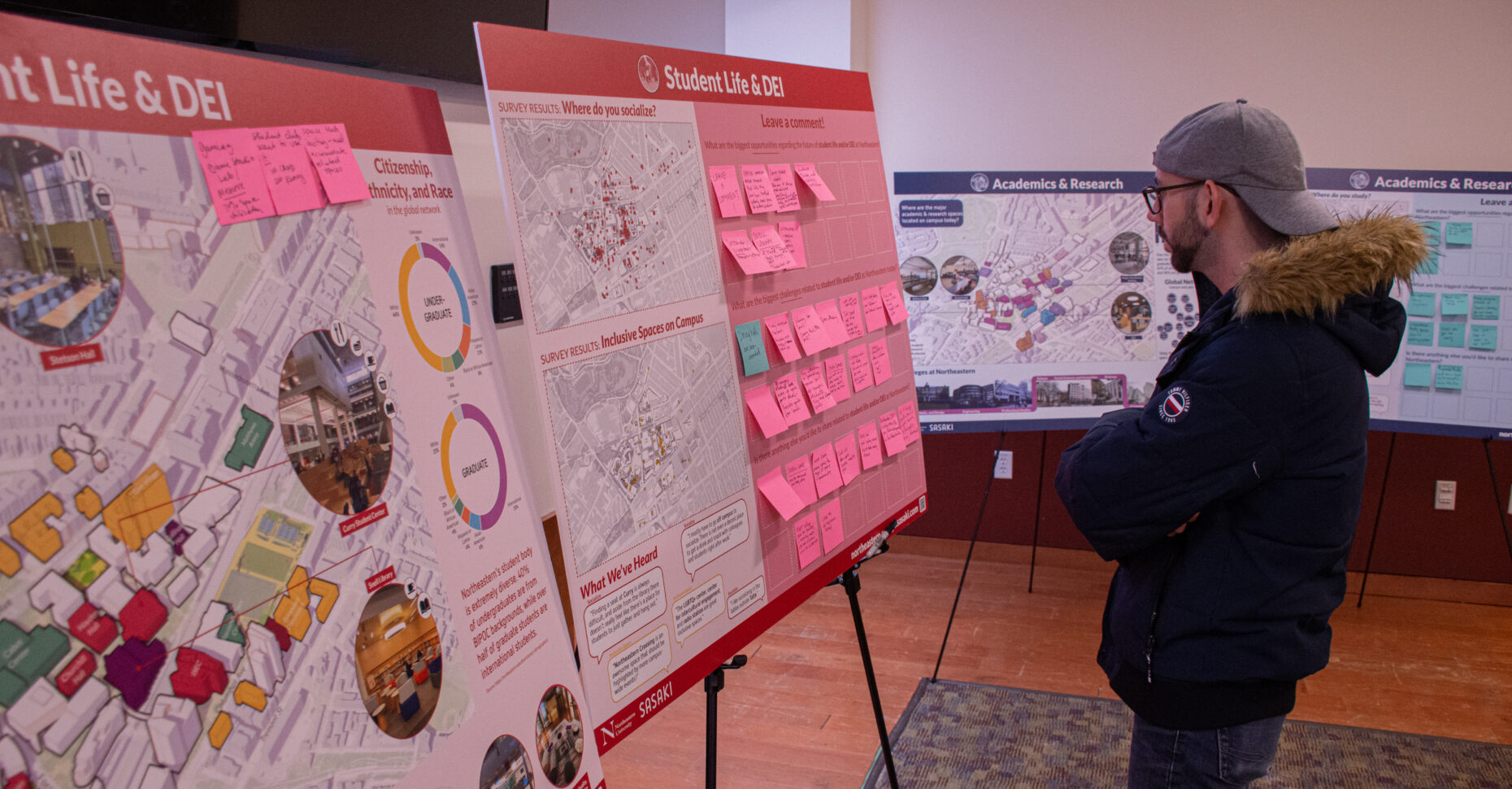
The Northeastern Campus Planning & Design team recently presented the findings of a survey for students and faculty to help them develop the ten-year institutional master plan. The research and survey were conducted by Sasaki, an interdisciplinary design firm founded in 1956. Sasaki began its work with Northeastern in the summer of 2022 and will present the 10-year plan document in the fall of 2023. On March 14, the campus planning team and Sasaki presented their findings at the Curry Student Center McLeod Suites.
The first Institutional Master Plan (IMP) was developed in 2001 because of a city of Boston requirement and the next was created by the City and Community Affairs office, now known as City and Community Engagement Department, in 2013. The 2013 plan included ISEC as a future project as well as 840 Columbus Ave., which has still yet to be built. According to Campus Planning Director Cory Berg, this year’s plan will play a bigger role internally because it is more comprehensive.
“By bringing in Sasaki, by having a planning department and by doing engagement and trying to get feedback, we hoped it would be more of a campus plan instead of just an institutional master plan,” Berg said.
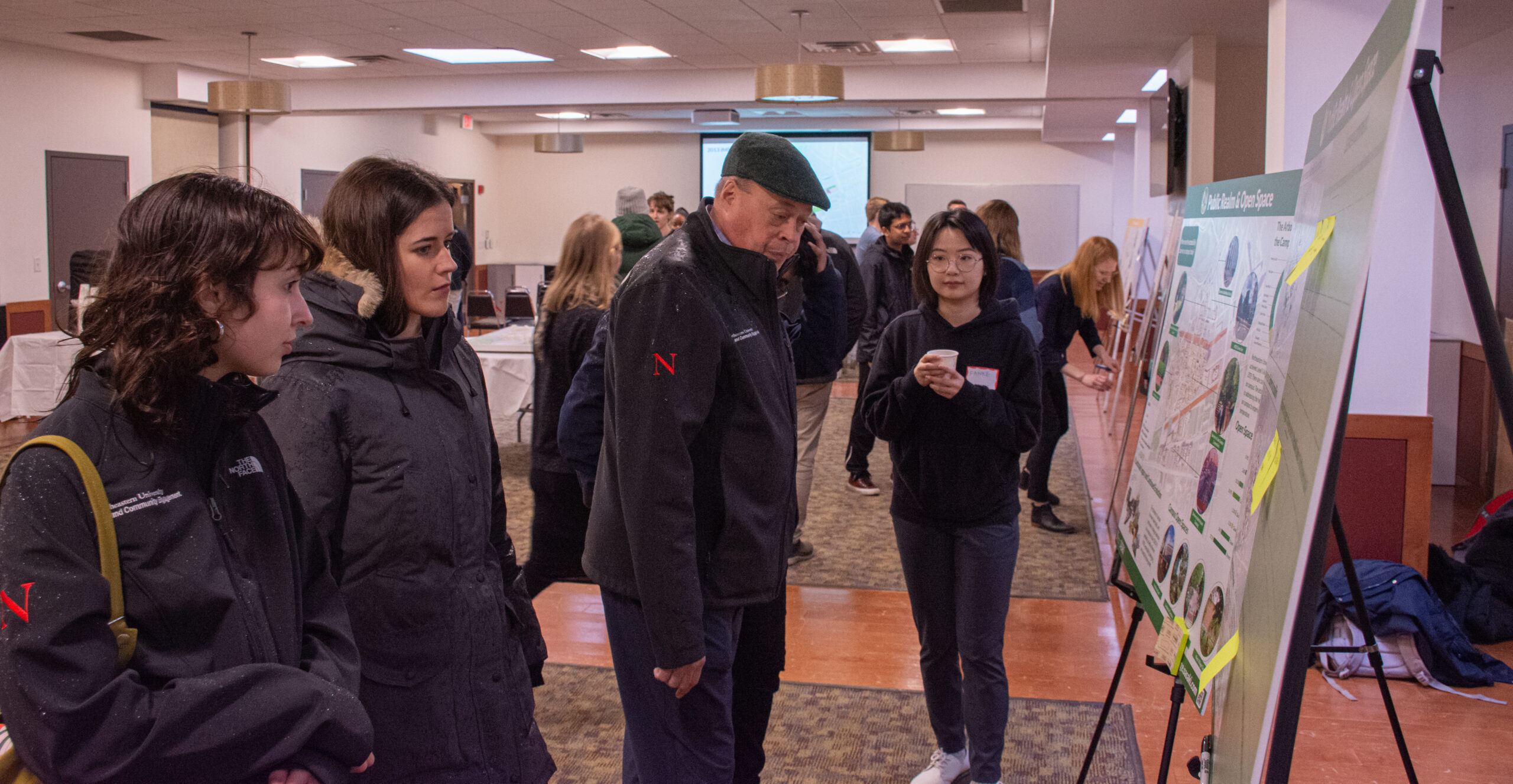 |
 |
Approximately 1,200 students completed the survey which had people pinpoint different spots on a campus map. Survey respondents could map their walking or biking path around campus and leave comments regarding different opportunities for improvement or issues with the current infrastructure.
The survey was emailed out, flyers were plastered around campus and PREF employees tabled to speak with students to gauge feedback and encourage them to take the survey. Aida Evans, the current landscape architecture co-op, tabled and enjoyed getting students interested in the process.
“I think garnering interest is one of the most important things to do in planning because it’s such a big job and there are so many things to think about, so if there are more people thinking about them, that’s a good thing,” Evans said.
Berg also tabled and found the survey results helpful for all of the planning department’s work, not just the master plan. Student response can inform which projects to take on in the future, as a lot of their work is done in one-year or three-year cycles. Ultimately, it is difficult for students to envision what the campus will or should be like in ten years considering they won’t be there, but current student opinion will reflect how future students will experience campus.
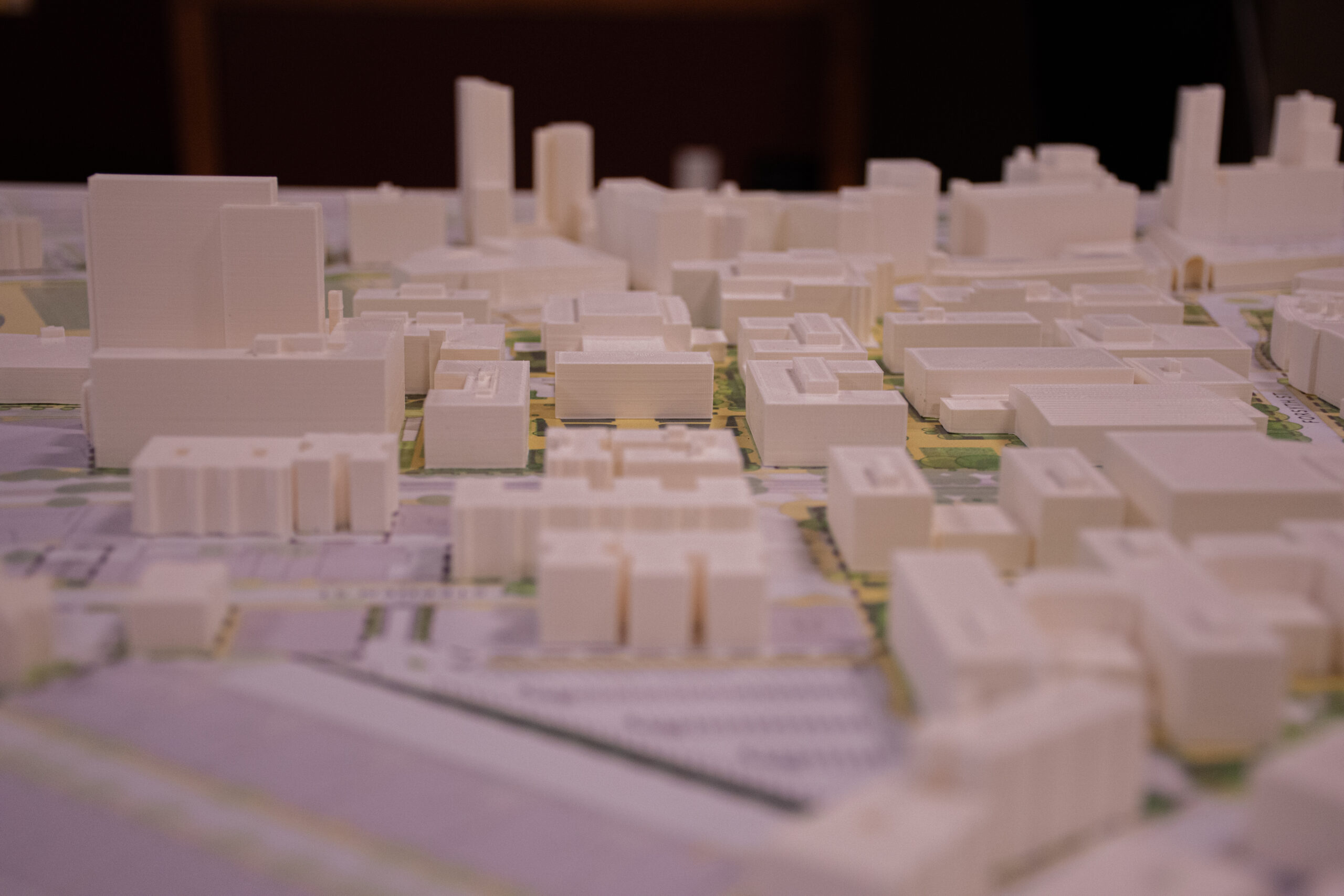 |
Students expressed frustration about overcrowding on campus, specifically the struggle to find space at gyms and within student spaces like Curry and Snell. Additionally, students voiced interest in more housing, or more access to blue bikes at a discounted price to help them get to campus.
Sasaki presented the campus planning department with a summary of their findings and had numerous large poster boards for the presentation and to increase student engagement. There were boards focused on student life and DEI, residential life, athletics and recreation, open spaces, academics and research, sustainability and resilience and more. Each board had space for additional student feedback with sticky notes. Some additional feedback included interest for more dance studios, more accessible green spaces and more affinity spaces.
Felicia Jiang, who has worked at Sasaki for almost two years as an urban planner, said that she enjoyed working for Northeastern’s campus because of its unique position in the city and its connection with global campuses. She echoed Berg’s comments about the importance of listening to students and catering to their needs considering they are the ones who experience all aspects of it.
“I really liked working on such an urban campus in Boston and really getting to know the city and the neighborhoods around it,” Jiang said. “I think Northeastern has a lot of potential as a campus within Boston but there are also a lot of challenges, so it’s an interesting plan.”
Written by Renée Abbott, March 31st, 2023

